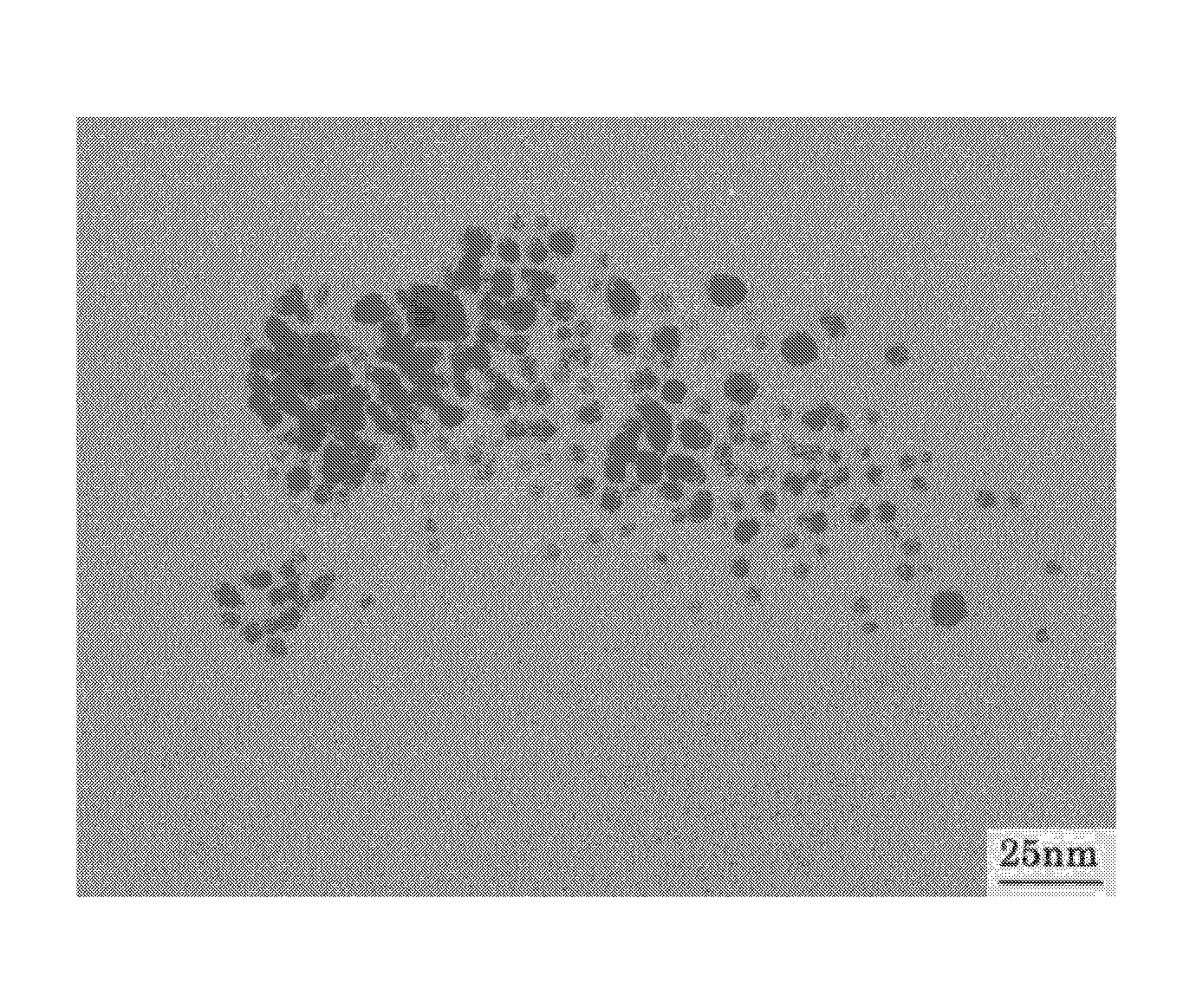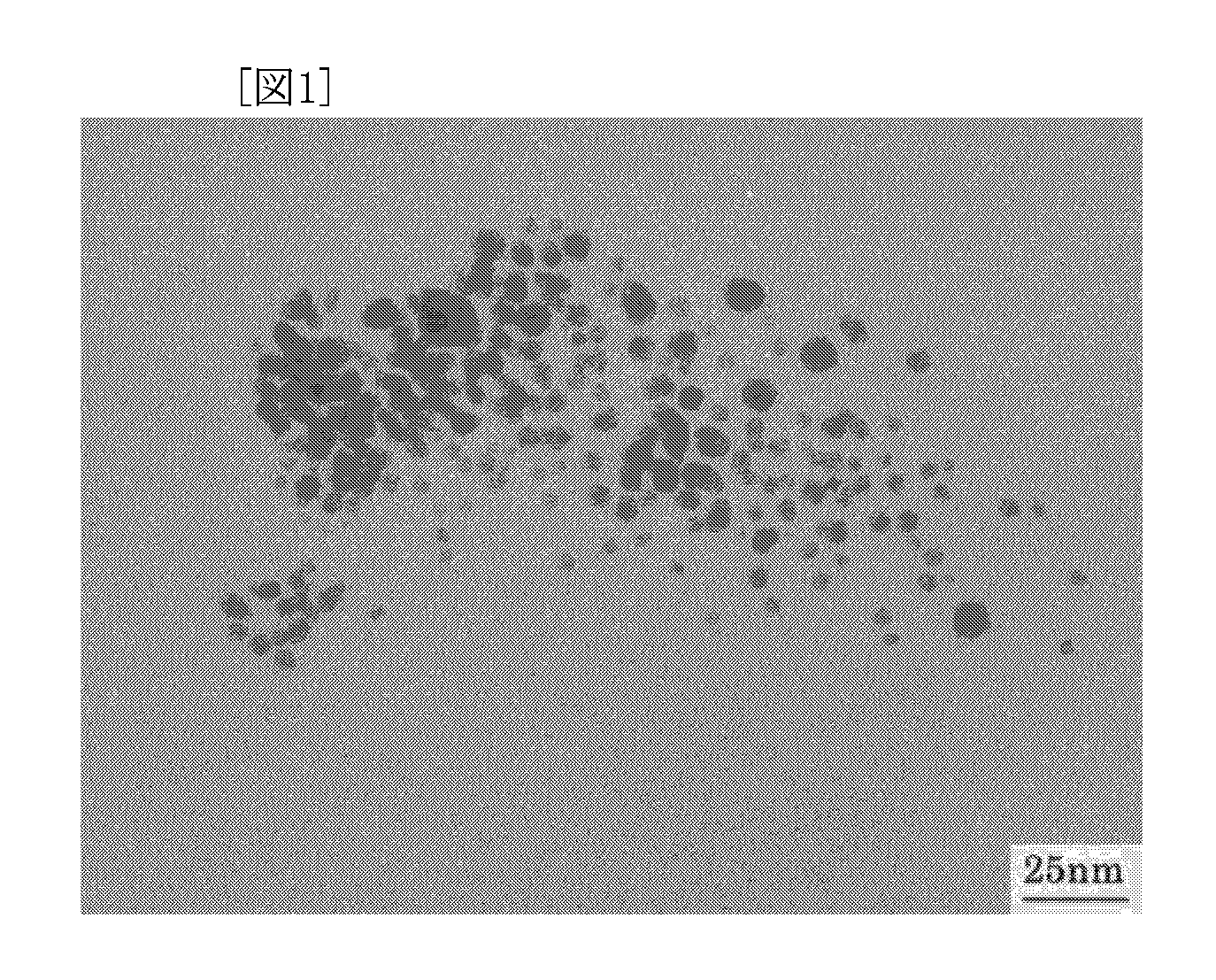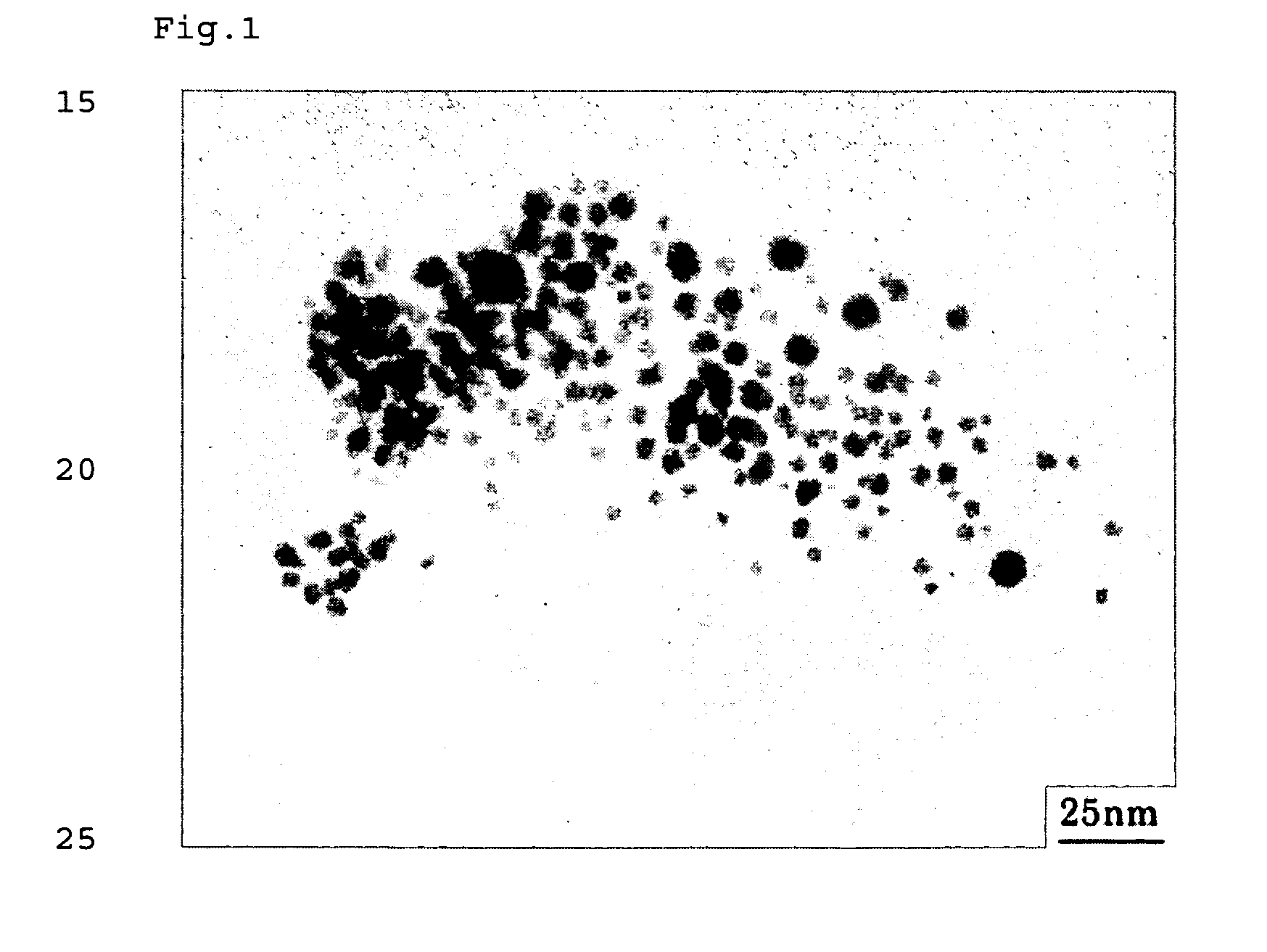Method for Production Thermoplastic Resin Composition Containing Ultrafine Particles
a thermoplastic resin and composition technology, applied in the direction of material nanotechnology, metallic pattern materials, transportation and packaging, etc., can solve the problems of insufficient purity for electronic materials, difficult to disperse ultrafine particles in the resin without aggregation, and difficulty in stably storing particles for a prolonged period, etc., to achieve easy and continuous production, easy to remove, and facilitate handling
- Summary
- Abstract
- Description
- Claims
- Application Information
AI Technical Summary
Benefits of technology
Problems solved by technology
Method used
Image
Examples
production example 1
Production of Silver Stearate as Metal-Containing Organic Compound
[0072] Commercially available sodium stearate was dissolved in deionized water by heating at 60° C. An equivalent amount of silver nitrate was separately dissolved in deionized water. The silver nitrate solution was added to the aqueous sodium stearate solution to deposit silver stearate, followed by suction filtration. After unreacted materials and by-products were removed by repeated washing with ethanol, toluene, and deionized water in that order, the resulting compound was dried in a vacuum dryer to yield a target compound.
[0073] The prepared compound was subjected to thermogravimetric analysis in a nitrogen gas atmosphere at a heating rate of 10° C. / min with a thermogravimetric analyzer (TG / DTA6200, manufactured by Seiko Instruments Inc.). As a result, the decomposition starting temperature was 180° C. The decomposition peak temperature was 243° C. The complete decomposition temperature was 340° C.
production example 2
Production of Silver Oleate as Metal-Containing Organic Compound
[0074] Commercially available sodium oleate was dissolved in deionized water by heating at 60° C. An equivalent amount of silver nitrate was separately dissolved in deionized water. The silver nitrate solution was added to the aqueous sodium oleate solution to deposit silver oleate, followed by suction filtration. After unreacted materials and by-products were removed by repeated washing with ethanol, toluene, and deionized water in that order, the resulting compound was dried in a vacuum dryer to yield a target compound.
production example 3
Production of Silver Laurate as Metal-Containing Organic Compound
[0075] Commercially available lauric acid and sodium hydroxide were placed in deionized water. The mixture was heated to 60° C. to form a solution, thereby yielding sodium laurate. An equivalent amount of silver nitrate was separately dissolved in deionized water. The silver nitrate solution was added to the aqueous sodium laurate solution to deposit silver laurate, followed by suction filtration. After unreacted materials and by-products were removed by repeated washing with ethanol, toluene, and deionized water in that order, the resulting compound was dried in a vacuum dryer to yield a target compound.
PUM
| Property | Measurement | Unit |
|---|---|---|
| number-average particle size | aaaaa | aaaaa |
| number-average particle size | aaaaa | aaaaa |
| particle size | aaaaa | aaaaa |
Abstract
Description
Claims
Application Information
 Login to View More
Login to View More - R&D
- Intellectual Property
- Life Sciences
- Materials
- Tech Scout
- Unparalleled Data Quality
- Higher Quality Content
- 60% Fewer Hallucinations
Browse by: Latest US Patents, China's latest patents, Technical Efficacy Thesaurus, Application Domain, Technology Topic, Popular Technical Reports.
© 2025 PatSnap. All rights reserved.Legal|Privacy policy|Modern Slavery Act Transparency Statement|Sitemap|About US| Contact US: help@patsnap.com



